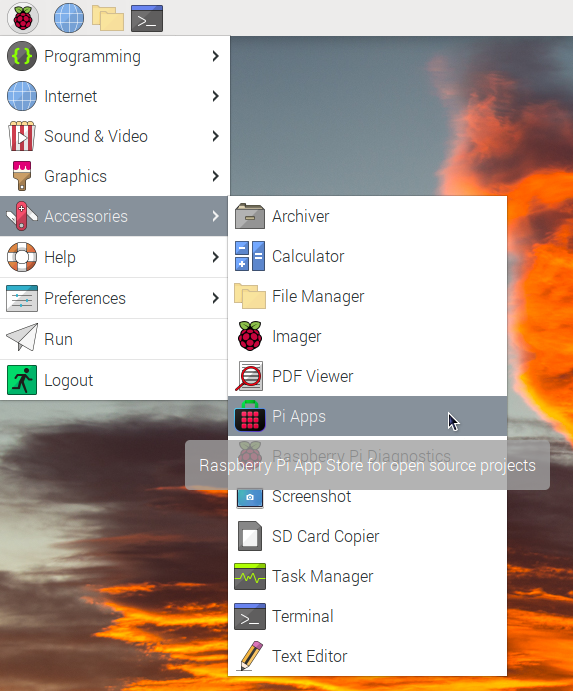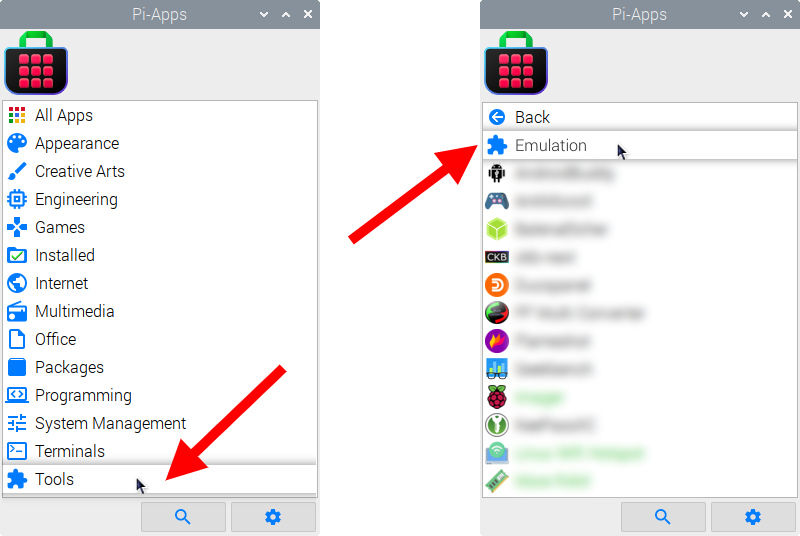Install  QEMU on
QEMU on  Raspberry Pi
Raspberry Pi
 QEMU
QEMU
QEMU is a generic and open source machine emulator and virtualizer.
QEMU 6.1 for Buster, system QEMU for other distros (Bullseye is currently using 7.0).To see all QEMU commands you can run: open a terminal, type 'qemu', and press the Tab key a couple times.
Fortunately, QEMU is very easy to install on your Raspberry Pi in just two steps.
- Install Pi-Apps - the best app installer for Raspberry Pi.
- Use Pi-Apps to install QEMU.
Compatibility
For the best chance of this working, we recommend using the latest version of Raspberry Pi OS, which is currently version Bookworm.
Raspberry Pi OS has 32-bit and 64-bit variants, both of which will run on most Raspberry Pi computers, including the Pi 3, Pi 4, and Pi5.
QEMU will run on either PiOS 32-bit or 64-bit.
Install Pi-Apps
Pi-Apps is a free tool that makes it incredibly easy to install the most useful programs on your Raspberry Pi with just a few clicks.
Open a terminal and run this command to install Pi-Apps:
wget -qO- https://raw.githubusercontent.com/Botspot/pi-apps/master/install | bashFeel free to check out the Pi-Apps source code here: https://github.com/Botspot/pi-apps
Install QEMU
Now that you have Pi-Apps installed, it is time to install QEMU.
First launch Pi-Apps from your start menu:

Then click on the Tools category, which leads to the Emulation category.

Now scroll down to find QEMU in the list.
![]()
Just click Install and Pi-Apps will install QEMU for you!
Pi-Apps is a free and open source tool made by Botspot, theofficialgman, and other contributors. Find out more at https://pi-apps.io